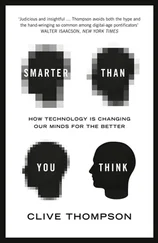Schulman was fascinated with epistemology, the study of knowledge. He researched complex problem solving by observing how doctors would diagnose patients in controlled experiments.
His results showed that skilled doctors actually drew several conclusions straight away. They didn't first assess symptoms, then specific signs before diagnosing a disease; instead, they identified several diagnostics at once. It turned out that decision making in medicine was even more complicated than the textbooks made it seem.
Schulman then extrapolated his findings to teaching and uncovered just how complex the profession was also. Like doctors, teachers had to make quick decisions in circumstances that were always changing. They had to decide in the moment whether to give the student an answer or wait for them to come up with it on their own, for instance.
Pedagogy advanced further as businessmen became more interested in investing in education. Poor teaching didn't only affect the future of students but also the future of big business.
Alfred Taubman, the CEO of fast-food chain A&W, learned this with the release of a particular product. He had introduced a “one-third pounder” cheeseburger at the same price as McDonald's “quarter pounder” in order to compete with them. Testing showed that the A&W burger beat the McDonald's burger in both value and taste, but it failed to sell. Why?
Well, market testing also revealed that customers felt they were being cheated – they thought they were being sold less meat for the same price. Astoundingly, customers thought that a third was smaller than a fourth, because three is smaller than four!
This made Taubman realize how badly education reform was needed in the United States, so he began investing in it. Other business tycoons, such as Microsoft’s Bill Gates, have also shown great interest in the subject. Commercial interest in teaching and education reform has helped it develop further.
While leading educational research is produced in America, it’s implemented in other countries.
Even though the United States has lagged behind in international academic rankings, a lot of successful foreign education systems are built largely on American research.
Most of the best teaching theories have originated in the United States, from researchers like Magdalene Lampert. Lampert received her Ph.D. from the Graduate School of Education at Harvard University, and chose to go into elementary math teaching after graduation.
Lampert and other teachers took an elementary school called Spartan Village in Michigan and turned it into a teaching laboratory. They used their academic knowledge to try and isolate the best teaching practices and become the best teachers they could be.
Their first step was videotaping all lessons so they could better assess lesson plans. This was the 1980s, so the technology was still quite new.
The Spartan Village teachers eventually perfected what became known as “This Kind of Teaching” (TKOT). TKOT was focused on understanding the students' perspective by analyzing their confusion, and showing them the path to an answer rather than the answer itself.
Interestingly, while the United States was at the forefront of teaching research, findings were being implemented elsewhere, in countries like Japan.
The first comparative study of classroom teaching differences between the United States and Japan was called the TIMMS study. The TIMMS study revealed that even though Japan had a strong education system, the teachers themselves were not always so great.
Informal interviews with Japanese teachers showed that they used similar methods to American teachers before education reform began in the 1980s. They had subjected the students to rote memorization in math classes, for instance.
More startling, however, was the revelation that Japanese education reform had been based on articles published by Magdalene Lampert and other Americans! The United States was producing useful pedagogical studies, but it wasn't benefiting from them.
Some charter schools have succeeded in implementing policies of accountability and zero-tolerance.
So how can we push for education reform? Some teachers have taken this matter into their own hands, by starting their own schools.
Charter schools, which started in 1991, have changed the way schools operate. A charter school receives part of its funding from its school district, but it is run by management that is independent from the district, usually a group of teachers or activists.
Charter schools are run like businesses, or “educational start-ups.” They're called charter schools because a founding charter lays out the school's goals when the school is formed.
One charter school, the Academy of the Pacific Rim (APR), states that students have to meet certain academic targets or the school would shut down, for instance.
Like businesses, however, charter schools soon became obsessed with statistics. They compile huge amounts of data, called quantitative metrics, and use these metrics to determine the best teaching methods they can use.
Early charter schools believed strongly in accountability and zero-tolerance. APR founder Doug Lemov was particularly obsessed with accountability. He believed that charter schools were successful because they were driven by students' results. After APR opened, he attended Harvard Business School so he could create diagnostic tests to measure the needs of his students.
Discipline was also thought to be critical to the success of charter students, especially as most charter schools operated in rough, inner-city areas. Lemov thought a lack of discipline caused other schools to fail, so he instilled nearly militant-like rules at APR. One student was sent home for having the wrong shade of blue sports shorts, for instance.
APR was generally successful, but the school’s policy of zero-tolerance didn't work at many other schools.
Harsh discipline doesn't benefit a student, but social problem solving does.
Are strict rules and harsh discipline the keys to successful education? No, they aren’t.
In fact, harsh discipline is counterproductive to learning. Discipline can make a student focus, but it also gives him anxiety and low self-esteem.
Rousseah Mieze, a APR graduate who later became a teacher, said the strict environment of APR shaped his negative self-image. When he was in college, he'd still imagine his former teachers saying things like, “You don't work hard enough. You don't belong here.”
Psychologists who study discipline have also found that harsh disciplinary actions can breed feelings of resentment, and can inhibit learning overall. Suspension and expulsion, for instance, are harmful.
Yet suspension and expulsion were initially thought to improve a learning environment because the action removed the disruptive students. A 2008 study by the American Psychological Association disproved this, finding that schools with high suspension and expulsion rates had the worstenvironments for learning.
Social problem solving is a much better alternative. Social problem solving sees discipline as an opportunity to learn, rather than a punishment.
Proponents of TKOT helped developed this method of resolving conflicts. When a conflict broke out between students, teachers viewed the conflict like a mathematical mistake and helped the students solve it on their own.
In social problem solving, conflict is resolved collectively and in its natural setting.
One teacher, for example, had a student named Jamal who struggled with anger. He came from a chaotic lower-class home, and often came to school disheveled and smelling badly. During one incident, he lashed out at a group of girls who had been teasing him for his smell.
Читать дальше












